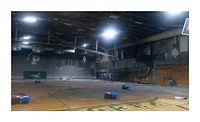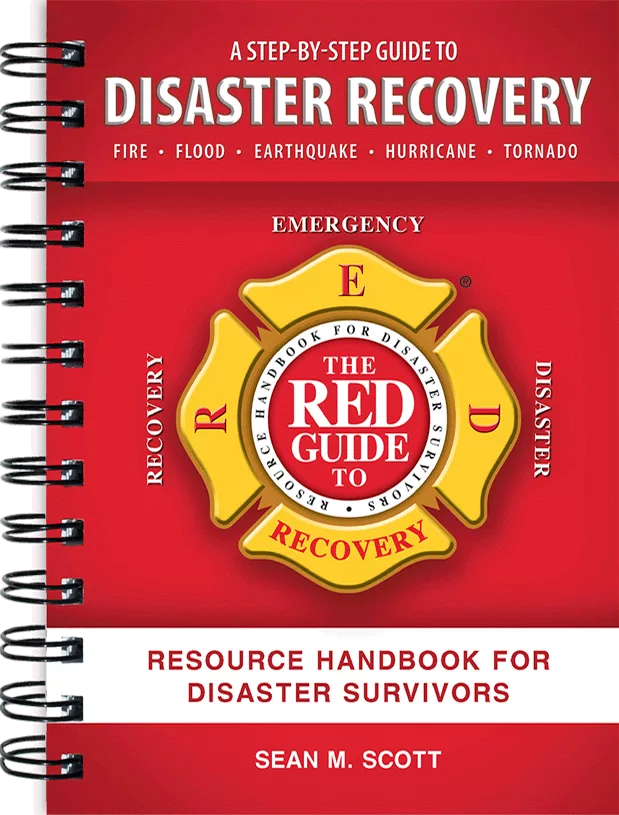Prepping for Disaster: The Large Loss Q&A
Large losses and catastrophes are a completely different animal from the residential job. For instance, you’re likely dealing with tens – perhaps even hundreds – of thousands of square feet, working to minimize any business interruption in commercial facilities and you need to ensure that you have the right – and right amount of – PPE, staffing and other miscellaneous equipment. What’s more is that in the case of a catastrophe – take Superstorm Sandy for example – crew members have to be prepared to be in areas for extended periods of time, so there’s certainly housing, meals and morale that you might have to deal with when it comes to your workers.
Yes, large losses and catastrophes aren’t for everyone – but such work can be a viable addition to any restoration business. They key, however, is preparation. To get an idea of how to prepare for such jobs, we reached out to two people that are familiar with them – Lisa Lavender, the COO of Berks Fire Water Restorations, and Art Dickerson, SVP Business Development for Paul Davis National. Being an independent restoration business and a franchise network, respectively, both handle large loss projects a bit differently. Here’s what they each had to say on everything from PPE to proper training:
Restoration & Remediation: How important is minimizing any business interruption to take into consideration?
Lisa Lavender: Minimizing business interruption is a key factor. We have developed our own business continuity program that addresses the unique challenges of any given organizations’ priorities and it is a basis for our staff’s training. In addition to our in-house training that allows our team to either execute a pre-determined course of action through the disaster planning process or the ability to break down an organization’s needs and identify the plan of execution at the time of loss, we have our staff get certified as Commercial Drying Specialist (CDS). Large losses require specialty drying approaches and formulas specific to commercial environments.
Art Dickerson: Critical components are planning ahead and finding out how you’re going to reduce any business interruption.
R&R: What measures do you take to ensure that you’ll have enough equipment available for a job or catastrophe?
LL: We own commercial desiccant dehumidifiers and axial fans that are designed to be used in commercial environments. More importantly, every project manager is equipped with a specialized reference guide to be used for commercial application. The reference guide includes, but is not limited to, a list of resources to call upon who are also prepared to respond to commercial losses. Everything is at their fingertips from IT specialists, to industrial electrical services, to realtors in the case of an emergency relocation, and of course, specialty and additional rental equipment from dehumidifiers to generators.
We have a full inventory of hundreds of pieces of restoration equipment and specialty vehicles, including desiccants and axial fans, however, you always need to be prepared to handle any unique needs and acquire additional equipment and expertise on a moment’s notice.
AD: We store (equipment) strategically around the country. Most of it is all stored in tractor trailers, so it’s easy to move, as opposed to being in a warehouse. We normally have to respond at a moment’s notice and have somebody on the road within an hour of notification. We have 17 large loss hub locations. Those locations actually change – it depends on the time of the year, what you’re expecting. For instance, when you get into hurricane season, we’ll start to move some assets toward the south and southeast, whereas in the winter time we might move it up more, keep it more in the Midwest. Not only do we have this equipment that we store in the tractor trailers, but we also utilize the equipment of the 380 Paul Davis offices. It gives us tens of thousands of pieces of equipment at our disposal before we have to resort to renting from outside sources.
R&R: What about managing PPE?
LL: Training is critical in all we do as professional restorers. The PPE will depend on the organization’s environment and the loss scenario. The products and materials that may be used in any given commercial loss should be given immediate consideration. Reference to the SDS (Safety Data Sheets) for products, materials and other substances on the site should be retrieved and reviewed with the team.
AD: We have rolling “Home Depot” trailers. These are designed to carry all the small tools and PPE that are necessary to handle a job and to handle it with 400-500 workers. You have to have a lot of that equipment. That’s not something you can just run out and get when the job comes in and you need it. Those things need to be stocked and ready to go. (The trailers carry) respirators, masks, goggles - everything that you would expect. You have to have hard hats for everybody. OSHA requires it on almost every commercial loss that you’re going in. Hard hats and boots and gloves and googles and masks and Tyvek suits.
R&R: Obviously there are a lot of intangibles on larger projects, whether it’s a catastrophe that you’ll be spending weeks – or months – working or a large commercial loss. What things need to be taken into consideration?
LL: There are many intangibles that are important, to name a few: Media – there must be complete discretion and nobody should speak to the media without the permission and guidance of the client. Employees, occupants, clients – we must be sensitive to those in the environment and their needs at the time of loss. Identify a point person – it is important to identify the key contact and keep communications flowing with this point person.
AD: Food and housing are things that are always a struggle when you go into a large loss. Making sure that your employees have a place to sleep and three meals a day is sometimes a daunting task. In our line of work, generators are critical. Most of the time, we don’t have local power. Catastrophe situations, they double or triple the number of components that you have to prepare in advance for, as opposed to what we would call a one-off loss.
Looking for a reprint of this article?
From high-res PDFs to custom plaques, order your copy today!






